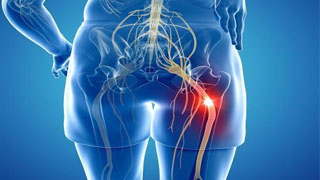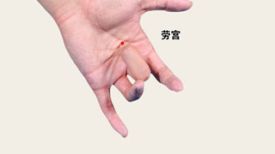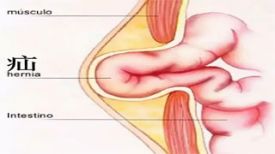
Sciatica is pain in the buttocks and spine. And there are legs. It may be caused by many different problems/injuries, and preventing them is the best choice for maintaining pain. What is a good way to prevent sciatica? Of course it's stretching!
But not just any stretching, the correct stretching method. These 14 exercises for sciatica have received our full support.
1: Scissor style hamstring stretching
This is great, a brief introduction to sciatica, stretching and relaxing your leg muscles. If they are too tight, they will pull onto your pelvis and compress your lower back. To solve this problem, daily scissor hamstring stretching can reduce pressure on the lower back.
How to achieve:
When starting to stand, align your right foot about three feet in front of your left foot.
Keep your hips and shoulders square, and if helpful, place your hands on your hips.
Bend your waist forward, keep your back straight, and align your torso above your forefoot.
Maintain this position for 10 seconds, allowing your weight to primarily rest on your front legs.
Return to the starting position and repeat the above action, this time placing your left foot in front of your right foot.
The goal is to repeat each leg three times.
2: Back flexion and stretching
There are many variations, and this stretching can be done standing or sitting. If done correctly, bending your back (when the spine bends forward) can help relieve pain.
How to achieve:
First, stand up straight with your feet spread out to be hip width apart.
While keeping your legs straight, bend your waist forward and lower your head as much as possible.
Once you start feeling stretch in your lower back, relax and place your hands on your ankles or floor to provide support.
Hold for 10 seconds, then relax and return to the starting position
The goal is to repeat three times
3: Extend from one knee to the chest
Stretching from one knee to the chest is an isolated exercise, which means it can only exercise one side of the body at a time. This is beneficial for maintaining muscle imbalance and even weight distribution when waking up at night.
How to achieve:
Lie on your back, grab your right knee below with your right hand.
Gently pull your right leg up to your chest until your hips are comfortably stretched.
Hold for 10 seconds.
Slowly return to the starting position and repeat the above action with your left leg.
The goal is to repeat it three times.
4: Knee to shoulder extension
Single knee extension is a more difficult variant, as this deeper extension helps with spinal flexion and opens up enough space for nerves.
How to achieve:
Close your legs together, fully extend, and lie on the floor.
Raise your right knee and grab the top of your knee with both hands.
Do not lift your hips off the floor, lift your right knee up to your left shoulder.
Once you feel a comfortable stretch, lift your head to complete this action.
Maintain for 30 seconds before returning to the starting position.
Repeat the above action with your left knee, three times for each leg.
5: Sitting with sciatic nerve sliding
This sitting exercise is very good for increasing ankle flexibility. It can also desensitize the sciatic nerve and improve the range of motion in the legs. It only exercises one leg at a time, helping you solve the problem of muscle imbalance.
How to achieve:
First, sit in a chair or on the floor with your back straight.
Keep one knee bent so that the foot is flat on the floor, while straightening the other knee so that the other foot is in front of you.
Bend your feet backwards so that your toes point towards you. If necessary, you can use a resistance band or towel to help pull your toes back.
Bend your feet backwards so that your toes point away from you.
Bend your feet forward and backward 20 times. If you want to make it harder, tilt your head forward and lean your chin against your chest.
Repeat the above actions with the other leg, with the goal of a set of 20 times.
6: Cobra style
Cobra style is not only a great exercise, but also poorly named as it can help alleviate symptoms caused by intervertebral disc herniation. It also has a modified version that makes things easier.
How to achieve:
Lie prone and stretch your legs backwards.
Bend your elbow so that your palm is flat on the floor of your chest.
Extend your elbows and lift your chest off the ground. If it hurts a lot, just partially straighten your elbow and raise your chest 45 degrees.
Hold for 10 seconds, then gently return to the starting position.
The goal is to repeat 10 times.
7: Sit and stretch your hips
Sitting pear shaped muscle extension (which we will introduce later) is another good choice for improving hip and lower back flexibility. Obviously, you need a chair or bench to do this.
How to achieve:
Sit with your feet flat on the floor and your knees at a 90 degree angle.
Lift your right leg and place your ankle above your left knee.
Focus your attention on your breath while leaning your torso forward over your ankles and knees.
Maintain for 30 seconds before returning to the starting position.
Repeat the above action with the left leg, three times for each leg.
8: Standing hamstring stretch
Return to the hamstring muscles for a second - they are attached to the bottom of your pelvis and if not active, may cause lower back pain or tension. This stretching exercise helps to make them more flexible!
How to achieve:
Stand straight with your feet together.
Stretch your right leg forward about 5 inches and place your heel on the floor or chair (anything slightly below waist height).
Tilt forward from the waist and keep your back straight until you feel a stretch in the back of your legs.
Maintain for 30 seconds before returning to the starting position.
Repeat the above action with the left leg, three times for each leg.
9: Sitting posture with spinal torsion
This is another great, gentle bend to relieve joint pressure.
How to achieve:
Start sitting on the floor, with your back straight and legs extended.
Place your right foot on the floor and cross it over to the outside of your left knee.
Twist the torso to the right, place the left elbow on the outer side of the right knee, and deepen the stretch.
Maintain this stretch for 20-30 seconds, then return to the starting position.
Repeat the above action on the other leg, three times for each leg.
10: Pigeon lying posture
The buttocks will experience significant tension, leading to sciatica. This is the first of our three pigeon pose variants, which eased the tension.
How to achieve:
Lie flat, legs together, and lean against the floor.
Lift and bend your legs, bend your right knee 90 degrees, and cross over your left thigh.
Grasp the left thigh with both hands and pull it into the body until you feel the maximum stretch.
Maintain for 30 seconds before returning to the starting position.
Repeat the above action with the other leg, with the goal of repeating it three times.
11: Sitting pigeon style
Adhering to the theme of pigeons, these sciatica exercises can bring greater hip flexion and overall flexibility.
How to achieve:
First, sit on the floor and stretch your legs forward.
Bend your right knee and place your ankle on your left knee.
Lean forward and stretch your upper body towards your thighs.
Maintain for 30 seconds before returning to the starting position.
Repeat the above action with the other leg, with the goal of repeating it three times.
12: Pigeon style
The forward or traditional pigeon style is usually the most difficult change, but it is an effective way to truly stretch your hips using your own weight.
How to achieve:
Kneel down. Move your right knee forward and place it in front of your torso, aligning your right foot with your left knee and pressing it against the floor.
Move your left leg backwards until it rests on the floor, and your body will naturally lower onto your right leg.
Support most of the weight with your legs and lower your torso with your arms until you feel the stretch of your right buttock cheek (or gluteus maximus, if we're technical).
Hold for 30 seconds, then return to start.
Repeat the above action with the other leg, three times for each leg.
13: Groin and adductor muscle stretching
Nervous groin or adductor muscles can quickly transform into sciatic nerve pain. Fortunately, maintaining the beauty and looseness of things through this stretching should be simple enough.
How to achieve:
Lie on all fours and try to spread your knees as wide as possible.
Place your hands flat on the floor, straighten your elbows, and swing your torso backwards to your hips.
Push yourself back further with your hands until your groin area starts to feel it.
Maintain this position for 15 seconds.
Slowly return to the starting position and repeat three times.
14: Standing pear shaped muscle extension
Let's end with a more challenging exercise for sciatica. The piriformis muscle is located in the buttocks, near the top of the hip joint. This kind of stretching helps to relieve tension. If you can maintain balance and complete independently, that would be great. But if you need support, you can start standing about one meter away from the wall.
How to achieve:
Stand with feet shoulder width apart.
Cross your right leg over your left knee.
Slightly bend your right leg until your buttocks are bent at a 45 degree angle.
Once your leg takes on the shape of number 4, hold it for 15 seconds.
Slowly return to the starting position and repeat the above action with the other leg.
Repeat three times for each leg.
Frequently Asked Questions about Sciatic Nerve
What is the sciatic nerve? Why does it hurt?
The sciatic nerve is the largest nerve in your body, running from the bottom of the spine through the hips and extending all the way to the heels of each leg. When it is stimulated or inflamed, pain can erupt anywhere the nerve spreads. This type of pain is called sciatica.
The nerves may be injured for various reasons, from herniated discs, infections, to inability to stretch properly. If the pain is not severe enough, limited neural activity will weaken the range of motion of your leg.
Studies like this indicate that spending time stretching the lower body can relieve pressure on the sciatic nerve and alleviate pain.
What are the alternative treatments for sciatica?
Stretching exercises are very helpful in preventing or relieving sciatic nerve pain, but you also have other options:
For the first few days after feeling stiff or painful, apply ice to that area three times a day.
After the first few days, change the angle and heat the painful area.
Anti inflammatory drugs such as ibuprofen can help alleviate sciatic nerve pain.
If sciatica persists for several weeks or more, please consult a medical professional.
conclusion
Severe pain can occur at any time in our lives. Doing these stretching exercises every day can help you maintain flexibility and reduce the risk of injury even if you don't feel pain.


